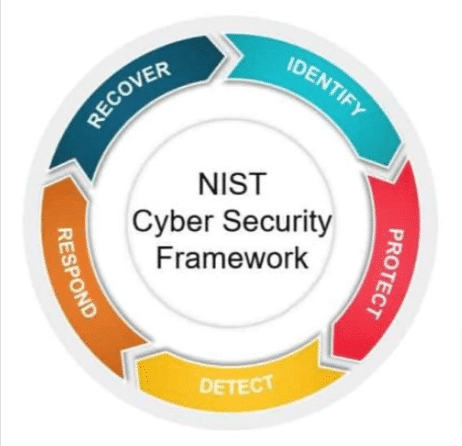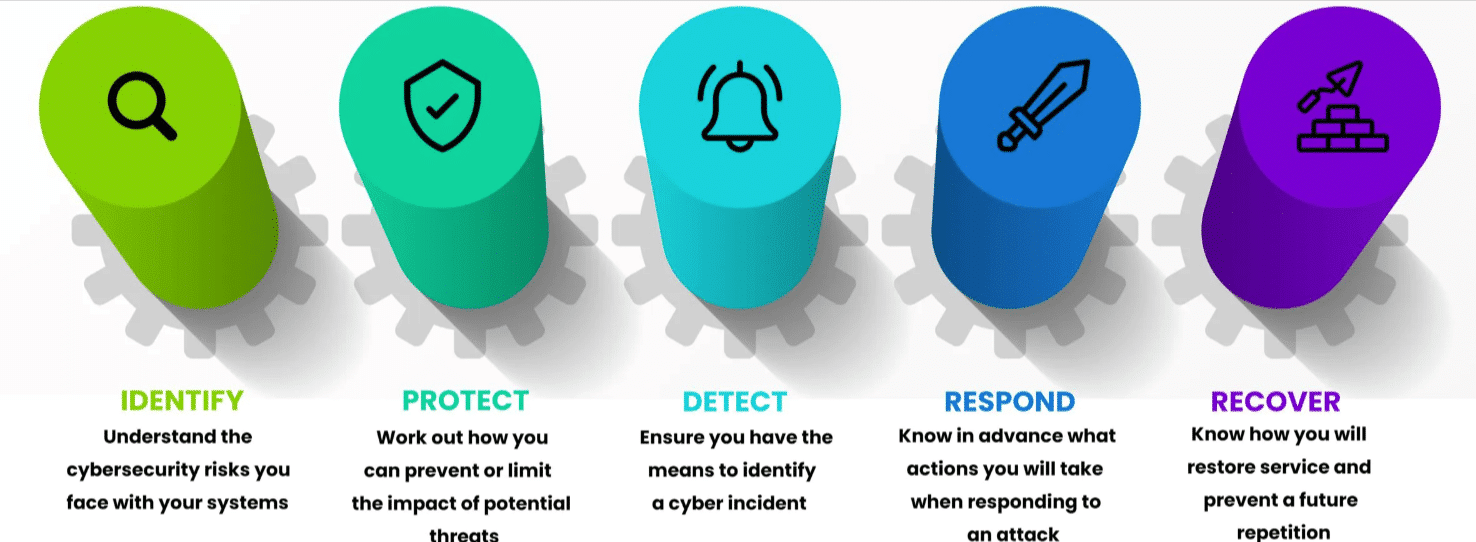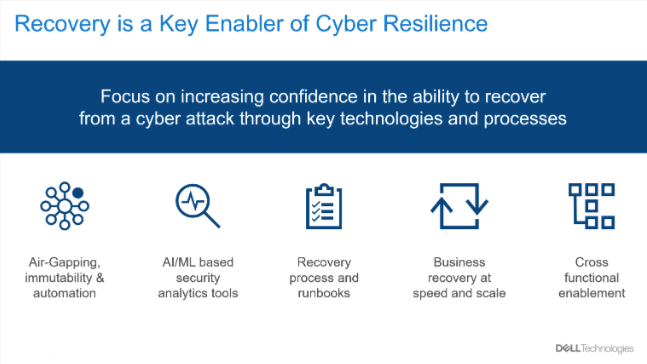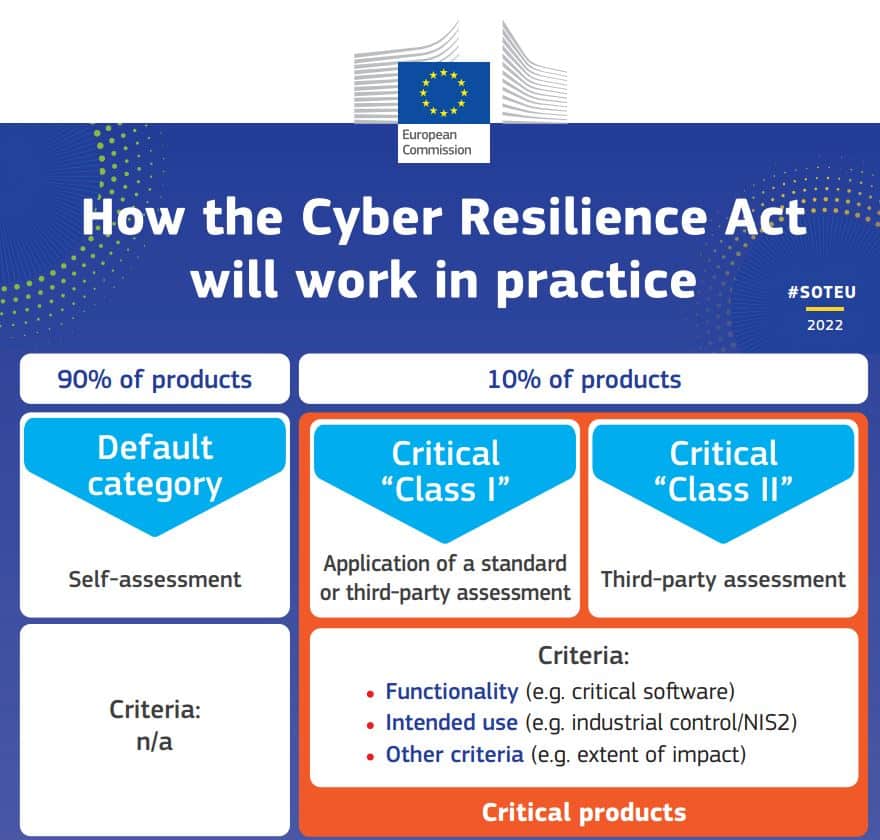Get the latest & greatest security insights straight to your inbox:
Resilience is defined by the Oxford Dictionary as “the capacity to withstand or to recover quickly from difficulties” and “the ability of a substance or object to spring back into shape.” In a digital business climate where the question isn’t if you will be the victim of a cyber attack, but when and how it will happen, resilience has become essential to doing business online.
While most organizations understand the concept of cybersecurity, cyber resilience planning now goes hand-in-hand with it as a way to be proactively prepared for the worst-case scenario. 64% of businesses have increased their spending in cyber risk mitigation as a result of having experienced a cyber attack. With the costs of cybercrime expected to reach $8 trillion in 2023, it’s a wise investment.
In this ultimate guide, we’ll explain everything you need to know about cyber resilience and its benefits. We’ll explain cyber resilience frameworks, how to create one for your business, and how to develop a cyber resilience strategy. Finally, we’ll dive into the EU’s potentially game-changing legislation, the EU Cyber Resilience Act 2023, and see how mandated cyber resilience might change the landscape for digital and physical products.
Cyber resilience is a proactive approach that organizations adopt to manage and mitigate cyber risks effectively. It involves building the capacity to continue operations and recover quickly from cyberattacks by implementing a cyber resilience framework. Unlike cybersecurity, which focuses on prevention and protection, cyber resilience acknowledges that attacks are inevitable. It therefore encompasses a framework and strategies for incident response, business continuity, risk management, and employee training.
Focusing on cyber resilience helps businesses strengthen their ability to withstand and recover from cyber attacks by preparing for potential incidents and fostering a cyber-aware culture.
A cyber resilience framework is a comprehensive set of structured guidelines and practices designed to bolster an organization’s ability to effectively withstand and recover from cyber threats.
The distinction between a cyber resilience framework and a cybersecurity strategy lies in their scope and specificity. While a cybersecurity strategy outlines the overall approach to safeguarding digital assets, a cyber resilience framework delves into the finer details of action and processes necessary for ensuring resilience.
The Cyber Resilience Review (CRR), ISO 27001, and the NIST Cybersecurity Framework are three prominent and proven cyber resilience frameworks.

A robust cyber resilience framework offers many benefits to organizations, including:
A cyber resilience framework is a crucial component of modern-day business. Here are ten suggestions to guide you in creating one that suits your organization:
Assess cyber risks; identify critical assets, potential threats, and impact of attack scenarios to build your cyber resilience framework.
Designate a cyber resilience team, define roles, and ensure top-level support for effective decision-making and incident response.
Create a step-by-step plan for prompt and effective response to cyber incidents, regularly testing and updating it to align with evolving threats.
Regularly monitor and update security controls, and stay informed about emerging threats to keep defenses current.
Enforce strong passwords and use multi-factor authentication (MFA) to enhance security.
Implement robust data backup procedures, and regularly test restoration processes for data integrity.
Keep systems, applications, and firmware up-to-date, and with the latest security patches.
Educate employees about cyber risks and best practices, and provide comprehensive cybersecurity training.
Evaluate third-party vendors’ cyber resilience measures, conduct security assessments, and include vendor security requirements in contracts.
Provide ongoing cybersecurity training, and conduct simulated phishing and cyber attack exercises to test and improve your cyber resilience framework.
If a cyber resilience framework is overall organizational guidance, a cyber resilience strategy is the specific action list.
It’s an all-encompassing plan incorporating essential measures for identifying, responding to, and recovering from cyber threats. A cyber resilience strategy considers the broader context of cybersecurity, aligning with your organization’s objectives, risk tolerance, and regulatory requirements.
Your organization needs a cyber resilience strategy because of the ever-changing cyber threat landscape. Cyber criminals continually devise new techniques to breach your defenses, exploit vulnerabilities, and disrupt operations. A cyber resilience strategy prepares you to confront these threats proactively, mitigating potential harm and ensuring smooth business continuity.
A strong cyber resilience strategy achieves the following goals:
Much like a cyber resilience framework, a robust cyber resilience strategy for offers significant advantages for your organization, including:

Here are ten surefire steps to creating an effective, proactive cyber resilience strategy for your organization:
Conduct a thorough assessment of your organization’s cybersecurity posture to identify vulnerabilities and risks across systems, networks, and data infrastructure.
Craft a detailed plan outlining procedures to follow in case of a cyber incident. Include incident detection, containment, recovery, and communication. Test and update the plan regularly for real-world effectiveness.
Implement a robust cybersecurity awareness program to educate employees on best practices and threat identification. Make cybersecurity training a regular part of onboarding and provide ongoing refresher courses.
To identify weaknesses and gaps, perform vulnerability assessments, penetration testing, and security audits. Proactively address vulnerabilities before attackers exploit them.
Engage with industry experts, participate in cybersecurity forums, and establish partnerships to exchange knowledge and best practices for enhanced cyber resilience.
Deploy robust encryption measures to safeguard sensitive data at rest and in transit. Use stringent access controls, authentication protocols, and data classification frameworks.
Develop a comprehensive strategy for data backup and recovery. Regularly test the restoration process and consider off-site or cloud-based solutions for enhanced resilience.

Use real-time monitoring systems, intrusion detection, SIEM tools, and log analysis to detect and respond to cyber threats promptly.
Stay current with cybersecurity trends, emerging threats, and regulatory changes through industry newsletters, webinars, blogs, and updated training sessions.
Regularly review and update your cyber resilience strategy to align with changing risks and best practices. Learn from past incidents and continuously enhance your defenses to stay ahead of cyber threats.
In a significant step toward mandating cyber resilience, the European Commission has proposed the Cyber Resilience Act 2023 (CRA) as a pivotal step toward fortifying cybersecurity and enhancing cyber resilience within the European Union (EU).
The CRA primarily targets manufacturers and retailers of products with digital elements, introducing mandatory cybersecurity requirements across the product lifecycle. Critical aspects of the CRA include:
ENISA, the EU cybersecurity agency, will play a central role in implementing the CRA. It collaborates with market surveillance authorities of EU member states, which enforce the regulation and have the power to impose penalties for non-compliance. In exceptional cases, the European Commission can intervene to ensure adherence to the rules and even restrict or temporarily remove non-compliant products from the EU market.
The CRA’s impact is far-reaching, significantly bolstering cybersecurity and resilience in the EU. It will enhance digital defenses to safeguard consumer and business interests and reduce cyberattack risks. Moreover, the CRA fosters an improved market for cybersecurity products and services, paving the way for a more secure digital future.

The Cyber Resilience Act 2023 (CRA) offers significant advantages to consumers and businesses within the EU:
With the establishment of an EU cybersecurity certification scheme, manufacturers can obtain certification to showcase compliance with required cybersecurity standards. Certified products will carry the CE marking, indicating adherence to cybersecurity requirements.
Through introducing cybersecurity requirements for manufacturers and retailers, the CRA ensures adherence to EU regulations, supporting the creation of a more secure digital ecosystem.
The CRA mandates cybersecurity requirements for products with digital elements, leading to improved security measures that reduce cyberattack risks and protect digital products from potential vulnerabilities.
The CRA’s compulsory cybersecurity requirements foster a more favorable market for cybersecurity products and services, promoting innovation and competition that benefits businesses and consumers.
Consumers can trust that both physical and digital products in the EU market provide enhanced security, safeguarding their data, privacy, and building trust.
Emphasizing cybersecurity risk assessment and security by design, the CRA empowers organizations to proactively identify and address potential vulnerabilities, significantly reducing the likelihood of successful cyberattacks.
The proposal’s obligations include monitoring internal activity, implementing security updates, and limiting attack surfaces, which enhance an organization’s digital defense and resilience.
If the EU embraces the CRA, member states (and their businesses and organizations) will significantly improve their cybersecurity and cyber resilience.
Organizations must prioritize their cyber resilience strategy in a digital world fraught with cyber threats to safeguard their operations, reputation, and customer trust. Implementing a solid cyber resilience framework and strategy allows organizations across industries to fortify their defenses, ensure business continuity, and maintain regulatory compliance.
Cybersecurity awareness training, such as the comprehensive programs offered by CybeReady, is crucial to building a resilient workforce. Through investing in the proper training, organizations can equip their employees with the know-how and cognizance to pre-emptively identify cyber threats.
Request a demo today to learn more about how CybeReady’s training can enhance your organization’s cyber resilience.
Get the latest security & insights
straight to your inbox:
Copyright © 2025 – CybeReady
We will reach out to you shortly.
In the meantime, please check out our complimentary CISO Tool Kit
We will reach out to you shortly.
In the meantime, please check out our complimentary CISO Tool Kit, or visit Our Blog
We will reach out to you shortly.
In the meantime, please check out our complimentary CISO Tool Kit, or visit Our Blog